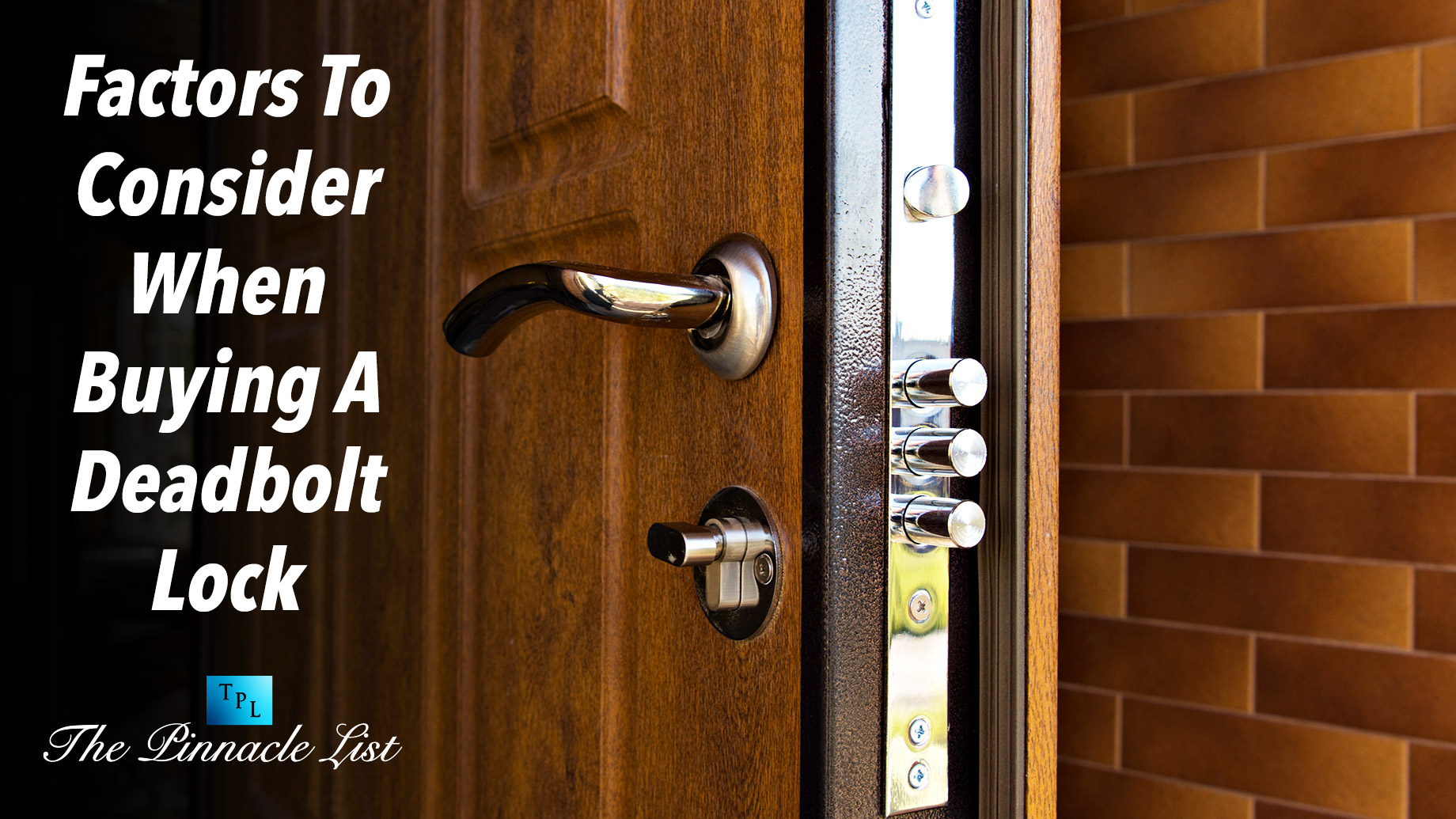
The national burglary rate in the United States in 2021 was 271.1 per 100,000 persons. This may be a decline from the previous year’s 308 burglaries per 100,000 residents. Still, considering these figures, ask yourself: Are your locks sufficient to prevent a determined intruder from entering your home?
To add another layer of protection to your property, you can consider installing deadbolts. However, before investing in one, it is best to arm yourself with accurate information, such as its varying types, lock grades, and pricing for deadbolt locks.
To make the most acceptable choice, one must have the necessary guidelines. This article will cover the different variables to consider when selecting one for your home’s protection.
What are Deadbolt Locks?
Deadbolt locks are bolts that you can only open by twisting the frame of the chamber with a specific key. Unlike ordinary locking methods, these locks are exceptionally resistant to jimmying and other techniques that can force open a lock. Due to the high security, it can provide, this lock design has become very popular.
Different Types of Deadbolt Locks
Deadbolt locks come in various shapes and sizes, each providing different features to suit specific needs. Here are some of the most common ones:
1. Single Cylinder Deadbolt
A single-cylinder deadbolt is basically a type of deadbolt that features a key slot on the exterior side and a thumb knob or lever on the interior. It means that anyone can open it from the inside without requiring keys. It’s designed this way so people can quickly get out in an emergency like a fire.
While single-cylinder deadbolt locks offer exceptional security from the outside, they still have some drawbacks when it comes to providing security from the inside. For instance, a small child can easily reach the lever and open the door without anyone in the house knowing.
2. Double Cylinder Deadbolt
As the name implies, this type of deadbolt lock features key slots on both ends, which means it can only be opened from the outside and inside using keys. With such a design, we can assume that this type of deadbolt lock offers superior security compared to single-cylinder deadbolts. However, this might cause problems when you need to get out fast.
3. Vertical Deadbolt
While both deadbolt types mentioned above do offer substantial security, the vertical deadbolt is by far the most superior. Determined intruders in the know can pry single and double-cylinder deadbolts by inserting a lever like a crowbar into the space between the door and the door jamb and forcing the door open. With vertical deadbolts, this is virtually impossible to do since the bolts are vertical and do not pass through the space between the jamb and the door.
Deadbolt Lock Grading System
According to an article from alpinedoorhardware.com, there are three classifications of deadbolt locks that are categorized according to their security level. Here’s a quick rundown on each grade:
ANSI Grade 1
Deadbolts are classified as “commercial grade” at Grade 1. Since they are high-security deadbolt locks, these locks are frequently utilized on commercial properties.
To receive a Grade 1 rating, a deadbolt lock must pass the following tests:
- It’s tested for a maximum of 250,000 open/close cycles.
- It reaches the door frame by one inch.
- It’s capable of withstanding ten 75-pound hammer strokes without breaking.
ANSI Grade 2
The grade 2 classification signifies that the deadbolt lock is “commercial grade” and competitively priced. Although these locks are tested less rigorously than Grade 1 locks, they are still ideal for installing in residential homes.
ANSI Grade 3
Grade 3 locks do not have to endure nearly the same amount of force as Grade 1 or Grade 2 locks. Grade 3 deadbolt locks can barely sustain two hits. Since they have the least resistance, they are commonly installed on doors as a security precaution.
Factors To Consider When Buying a Deadbolt Lock
1. Seek Expert Advice
Law enforcement officials and skilled locksmiths are well-versed in the potential security vulnerabilities in your home and the precautions you should take to deter would-be intruders. Consider scheduling an evaluation from a police officer or a locksmith who can assess your existing locking systems and provide recommendations for improvements.
2. Prioritize Functionality Before Aesthetics
Everyone wants stylish door locks, especially for the front door. There is no denying that the type of lock you would install for your bedroom or bathroom door does not need to have the same security as the locks on your front and back doors. However, the functionality must come first when choosing locks.
3. Lock Grading System
Consider the lock grading of the deadbolt you want to purchase to determine if it suits your needs. (Please refer to the section above for a detailed outline regarding the lock grading system.)
4. Price Point
Cost is a common factor when selecting locks and deadbolts. Locks with a high level of security may appear expensive, but they often incorporate hardened cylinders, unique pin configurations, and other built-in defenses. In general, more expensive locks offer superior quality and security.
Key Takeaway
Installing high-quality deadbolt locks on all external door access points is an essential first line of defense against intruders. While no lock can ever be guaranteed to keep an attacker out, knowing which deadbolts may reduce risk and provide additional security is essential when choosing locks for your home. Consider all the ideas and information mentioned above to help you make informed purchasing decisions.